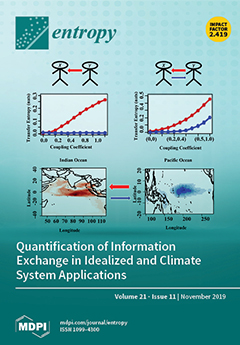Open AccessArticle
Radiomics Analysis on Contrast-Enhanced Spectral Mammography Images for Breast Cancer Diagnosis: A Pilot Study
by
Liliana Losurdo, Annarita Fanizzi, Teresa Maria A. Basile, Roberto Bellotti, Ubaldo Bottigli, Rosalba Dentamaro, Vittorio Didonna, Vito Lorusso, Raffaella Massafra, Pasquale Tamborra, Alberto Tagliafico, Sabina Tangaro and Daniele La Forgia
Cited by 47 | Viewed by 4752
Abstract
Contrast-enhanced spectral mammography is one of the latest diagnostic tool for breast care; therefore, the literature is poor in radiomics image analysis useful to drive the development of automatic diagnostic support systems. In this work, we propose a preliminary exploratory analysis to evaluate
[...] Read more.
Contrast-enhanced spectral mammography is one of the latest diagnostic tool for breast care; therefore, the literature is poor in radiomics image analysis useful to drive the development of automatic diagnostic support systems. In this work, we propose a preliminary exploratory analysis to evaluate the impact of different sets of textural features in the discrimination of benign and malignant breast lesions. The analysis is performed on 55 ROIs extracted from 51 patients referred to Istituto Tumori “Giovanni Paolo II” of Bari (Italy) from the breast cancer screening phase between March 2017 and June 2018. We extracted feature sets by calculating statistical measures on original ROIs, gradiented images, Haar decompositions of the same original ROIs, and on gray-level co-occurrence matrices of the each sub-ROI obtained by Haar transform. First, we evaluated the overall impact of each feature set on the diagnosis through a principal component analysis by training a support vector machine classifier. Then, in order to identify a sub-set for each set of features with higher diagnostic power, we developed a feature importance analysis by means of wrapper and embedded methods. Finally, we trained an SVM classifier on each sub-set of previously selected features to compare their classification performances with respect to those of the overall set. We found a sub-set of significant features extracted from the original ROIs with a diagnostic accuracy greater than
. The features extracted from each sub-ROI decomposed by two levels of Haar transform were predictive only when they were all used without any selection, reaching the best mean accuracy of about
. Moreover, most of the significant features calculated by HAAR decompositions and their GLCMs were extracted from recombined CESM images. Our pilot study suggested that textural features could provide complementary information about the characterization of breast lesions. In particular, we found a sub-set of significant features extracted from the original ROIs, gradiented ROI images, and GLCMs calculated from each sub-ROI previously decomposed by the Haar transform.
Full article
►▼
Show Figures






